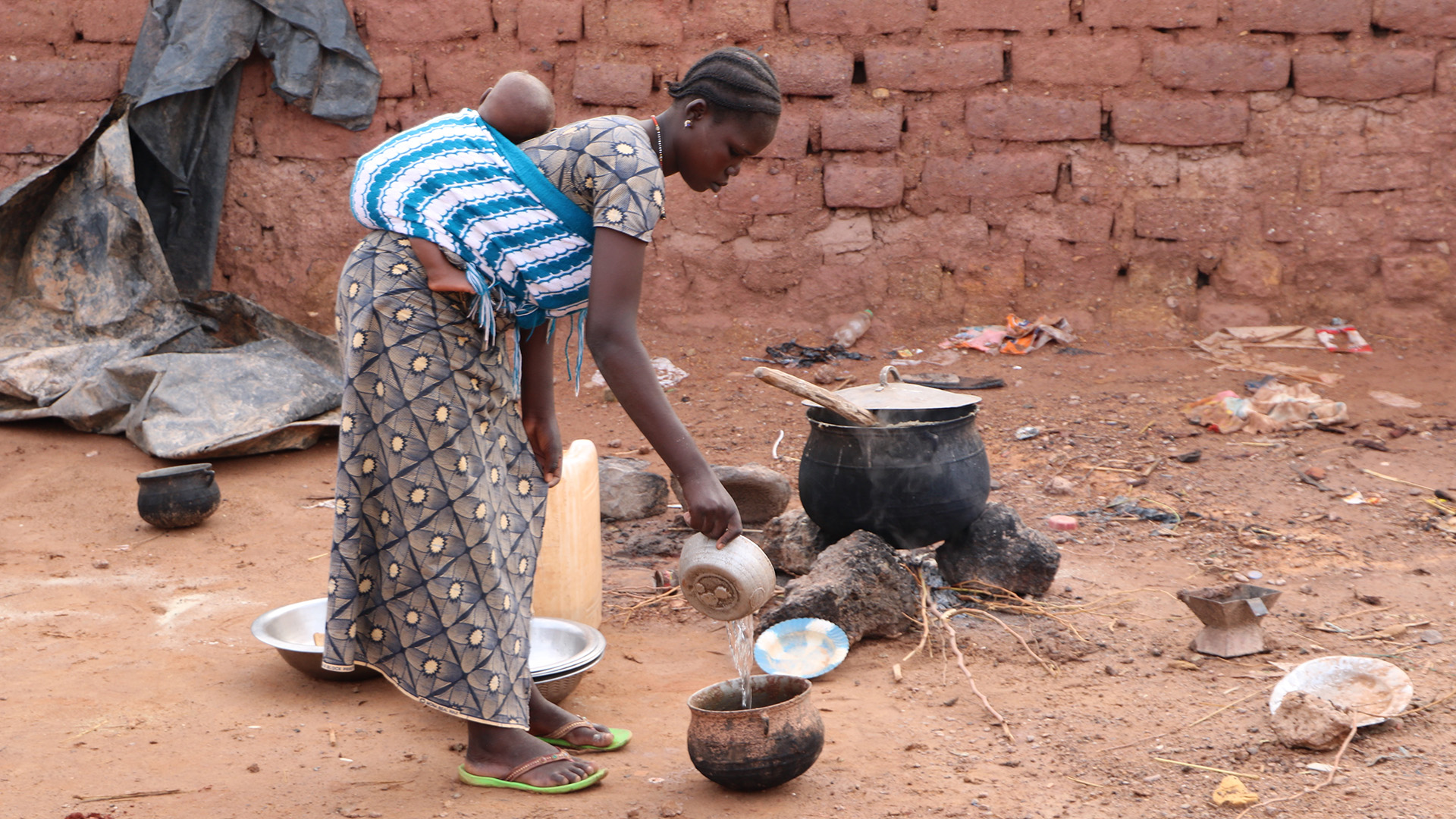Conflict, poverty, and economic shocks drove food crises in “hotspots” in almost every region of the world in 2020.
While Burkina Faso, northeastern Nigeria, and Yemen are said to be on the brink of famine, “famine-like” conditions were reported at the end of 2020 in the remote east of South Sudan as a result of floods and intercommunal clashes.
In Yemen, 13.5 million people are facing “high levels of acute food insecurity”, a number predicted to rise to 16.2 million – more than half the population – in the first six months of 2021. The country’s severe hunger problem is the result of a dangerous mixture that includes fighting, a currency crash, and rising prices.
Burkina Faso has been one of the world’s fastest deteriorating food crises. The violence between jihadist groups, communty militia, and government forces has seen the number of people in need of emergency food aid triple to 3.2 million this year. In what is a broader Sahelian conflict, more than 7.4 million people have also been displaced across the region.
War and hunger are old partners. But you can’t look back at 2020 without mentioning COVID-19 – the new villain.
Violence forces people off their land, closes markets, and deepens poverty. But it also denies access to humanitarians – compounding the hunger problem in the worst-hit countries, according to the World Food Programme.
Relief workers have struggled to reach those in need, from Afghanistan to Syria, while in northeastern Nigeria, jihadist violence – and a suspicious government army guarding access to conflict zones – has meant more than one million people are beyond the reach of aid.
War and hunger are old partners. But you can’t look back at 2020 without mentioning COVID-19 – the new villain. The economic impact of heavy-handed lockdowns and curfews has rippled through societies, driving new needs in countries like Lebanon, which was already falling off the economic cliff, as well as in middle-income countries like Chile.
Formal economies, dependent on global trade, have struggled, as have families dependent on remittance flows from abroad. Some governments have responded to the crisis with social protection programmes – although targeting and scale have been problems in many cases. In other countries, mutual aid societies have stepped in to try to plug some of those gaps.
As COVID-19 restrictions eased in some places later in the year, informal sectors – the largest employers in several developing nations – did begin to recover. These hand-to-mouth businesses – many of them women-run – have shown flexibility and resilience.
If a food crisis is about affordability rather than supply, then pity Venezuela and Zimbabwe, where economic meltdowns have resulted in the world’s highest rates of inflation.
For Venezuelans trying to migrate to escape the hardships, COVID-19 has added yet another hurdle, as neighbouring countries introduce immigration controls, stalling hopes of regional migration law reform.
If a food crisis is about affordability rather than supply, then pity Venezuela and Zimbabwe.
In Zimbabwe, the coronavirus is just one more problem to navigate in a country where more than half the population is hungry as a result of economic mismanagement and successive droughts.
Natural disasters have also taken their toll on food security this year. Honduras suffered two major hurricanes in November, storms galore rampaged across Asia, and flooding swamped the Horn of Africa – creating the perfect breeding conditions for a new swarm of desert locusts.
As we offer this selection of our reporting from 2020, any hope for a respite in 2021 may, unfortunately, be optimistic.
(Compiled by TNH Africa Editor Obi Anyadike.)

Conflict and coronavirus spark a hunger crisis in Burkina Faso
The number of people in need of emergency food aid in Burkina Faso has tripled to more than 3.2 million – some 11,000 of whom are suffering from “catastrophe” levels of hunger – as the economic fallout of the coronavirus pandemic hits a country already engulfed by violence.

A Kenyan COVID-19 notebook: The ‘mama mbogas’ and the path to recovery
More than 90 percent of Kenyans have seen their incomes fall as a result of COVID-19, and nearly three quarters of families have had to dip into savings. But there are signs of resilience and recovery.

Drought Diaries: Six families, three countries, one pandemic
Late last year, we began tracking how climate-linked food price rises affected six families in three countries – Kenya, Somalia, and Zimbabwe. Here are their stories.

Food prices soar under coronavirus threat in Afghanistan
In Afghanistan border closures and export restrictions are squeezing supply lines and pushing food prices up, raising fears that millions already facing emergency levels of food insecurity will be even more at risk as the coronavirus spreads.

In storm-hit Honduras, a climate crisis drives needs and fuels migration
Years of devastating drought have caused mass hunger in Honduras, leading thousands to flee annually towards the United States. This is what climate migration will increasingly look like.

Even if famine isn’t declared, Yemen has a massive hunger problem
While experts debate the data and the methodology used to declare a capital “F” famine, Yemenis find their money is worth less and they are forced to make horrible choices, like which family member won’t get to eat on any given meal or day.

Inside the childhood health ‘emergency’ in Syria’s Idlib
In the wake of mass displacement, COVID-19, and a collapsing currency, a population already in dire need after years in the crosshairs of Syria’s war begins to see worrying signs of hunger in its youngest.





